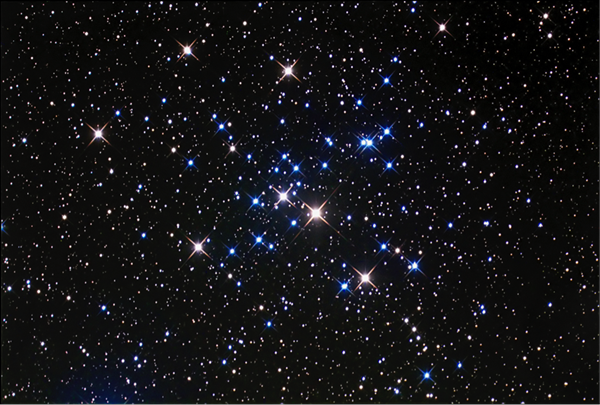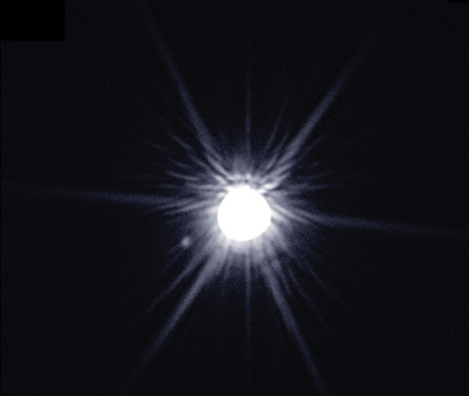A blaze of brilliant stars decorates the January sky, ushering in 2018. Brightest of all is Sirius (Alpha [α] Canis Majoris) in Canis Major, the Big Dog. Aptly nicknamed the Dog Star, Sirius stands obediently by its master, Orion the Hunter.
Swing your binoculars Sirius’ way, and it puts on an astonishing show. If you can, catch it as it is just rising above the southeastern horizon. Since you look through more of Earth’s atmosphere when viewing near the horizon, temperature layers and intertwining wind currents play havoc with Sirius’ light, bending and refracting it into a firestorm of rapidly changing colors. When our atmosphere is especially turbulent, resulting in “poor seeing,” Sirius’ color shifts are stroboscopic.
As it rises higher in the sky, the colorful show slowly calms down to reveal that the star’s true color is a radiant white. Winter skies often remain turbulent through the night, with upper-level winds still creating mayhem with distant starlight. The brighter the star, the greater the twinkling effect. In the case of Sirius, the effect can be almost hypnotic.
Sirius shines at magnitude –1.4. But while it appears bright in our sky, it is not an especially luminous star. True, it does radiate 26 times more energy than our Sun, but it is not nearly as powerful as, say, Rigel, seen 27° to the northwest. No, Sirius appears so bright primarily because of its distance from our solar system. Sirius lies only 8.6 light-years away, while Rigel is almost exactly 100 times more distant. Were they to swap places, Sirius would shine at only 9th magnitude. Rigel, however, would blaze at a staggering magnitude –10.
Shift Sirius toward the top (north) of the field and then take a look near the bottom (south) for a clump of faint stars. That’s the open cluster M41. I think of it as the “Dog Tag Cluster” for its position near Canis Major’s “neck.”
Many astro history buffs credit the Greek scientist Aristotle (384 b.c.–322 b.c.) with discovering M41. That credit is based on his description in Meteorologica (325 b.c.) in which he writes, “one of the stars of the Dog has a tail, though a dim one; if you looked hard at it, the light used to become dim, but to a less intent glance it became brighter.”
The first person to associate this statement with M41 was John Ellard Gore (1845–1910) in an article he authored in the August 1902 issue of The Observatory. Others have since adopted the same interpretation, although some suggest it actually points to a trail of faint stars farther south, near Wezen (Delta [δ] Canis Majoris). There is no way to know for sure.
From Aristotle’s words, however, there seems little doubt that whatever he saw, he used averted vision to see it more distinctly. You can, too. But to see M41 with the unaided eye, it takes especially dark, transparent skies.
The brightest star in M41, designated HD 49091, lies nearly dead center in the pack. A type K3 orange giant, it shines at magnitude 6.9 and puts on a fine show through binoculars. Try defocusing the image ever so slightly to accentuate the color. How many other red and orange stars can you count in M41?
Also try your luck at resolving a double star found northwest of the cluster’s center. Known as h2341, its component stars shine at magnitudes 8.3 and 9.1 and are separated by 45″. That’s wide enough to be resolved at 10x, but their faintness will likely require you to use a tripod or other support to steady the view. Then, by using Aristotle’s technique of averted vision, they may just pop into view.
I’d love to hear about your binocular adventures and conquests. Contact me through my website, philharrington.net.
Until next month, remember that two eyes are better than one.












